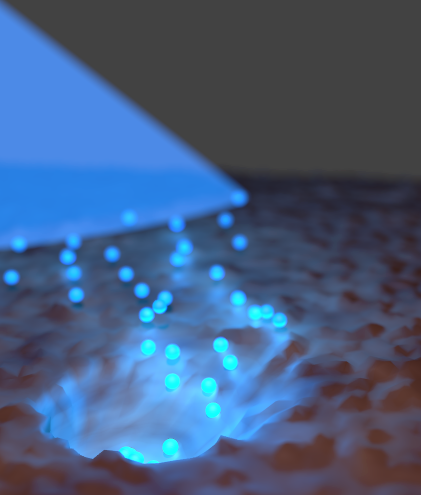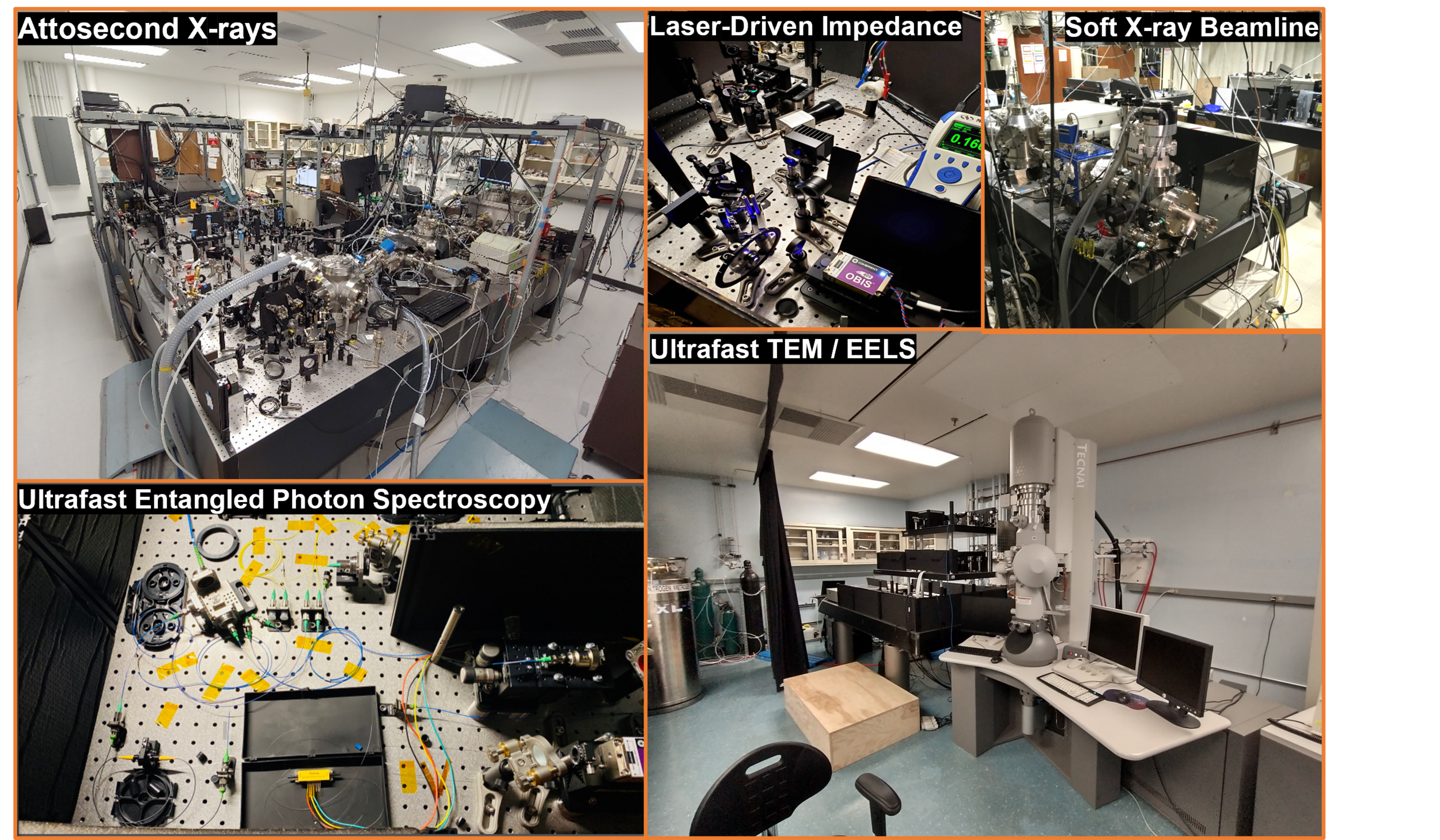*Page best viewed with desktop or landscape orientation*
Processing Light
When a material or molecule interacts with light, the attosecond and longer response determines if energy is stored, converted, or re-radiated.
Transient X-Ray and Electron Spectroscopy
Extreme ultraviolet (XUV) to soft x-ray pulses are created by multiple techniques. The change in the element specific X-ray edge is used to measure the electron and hole energy or phonons and polarons following photoexcitation. The coupled electronic-structural dynamics, as well as charge and heat transfer, can be measured in junctions. Ultrafast TEM-EELS is being developed to measure these effects with nm resolution.
Single Cycle Spectroscopy
Single cycle visible and near-infrared pulses are necessary for efficient high-harmonic generation. Using the attosecond XUV or single-cycle pulse, the electron density's temporal response to a photoexcited electron-hole pair can be measured. This screening / many-body state build up time is the fundamental time limit for electronic switching and sensing.
Few Photon, Few fs, Entangled Photon Spectroscopy
The temporal dynamics of a material can be measured through the modulation of entangled photons. Equilibrium and fluctuation driven processes, such as a chemical reaction, are directly measured with single-photon per mode or higher excitation. The technique inherently measures how chemical or biological systems can create and modulate entangled photons on the timescale of their dephasing.
Some Applications
1. Renewable Energy Systems: Transient XUV spectroscopy has been used to understand how polarons mediate photochemistry, to measure hole transport layer by layer in protected photoelectrodes, and is now being used to study ion migration in battery and membrane materials.
2. Entangled Photon Interactions:
We are exploring how the stimuli-response relationships of chemical and biological systems can be incorporated in quantum computing, information, or bio-sensing applications. Entangled light-matter interactions are also used to study correlated phenomena in condensed matter systems.
A collage of some of our instrumentation builds currently in the lab. From nanophotonic entanglement setups all the way to multiple table-top spanning attosecond X-ray setups - instrumentation building and fundamental exploration is what makes our lab turn!
Online Videos About Scott’s Work
Public Lecture on Entangled Photon Spectroscopy
Dr. Cushing talks about how to make a tabletop chemical instrument, being a professor, and the importance of mental health in all professions. Dr. Cushing's enthusiasm for lasers will leave you wanting to learn more. We hope you enjoy! About us: ChemTalk is a small student-led and ad-free non-profit working to become the top chemistry education platform in the country. Article link is here








